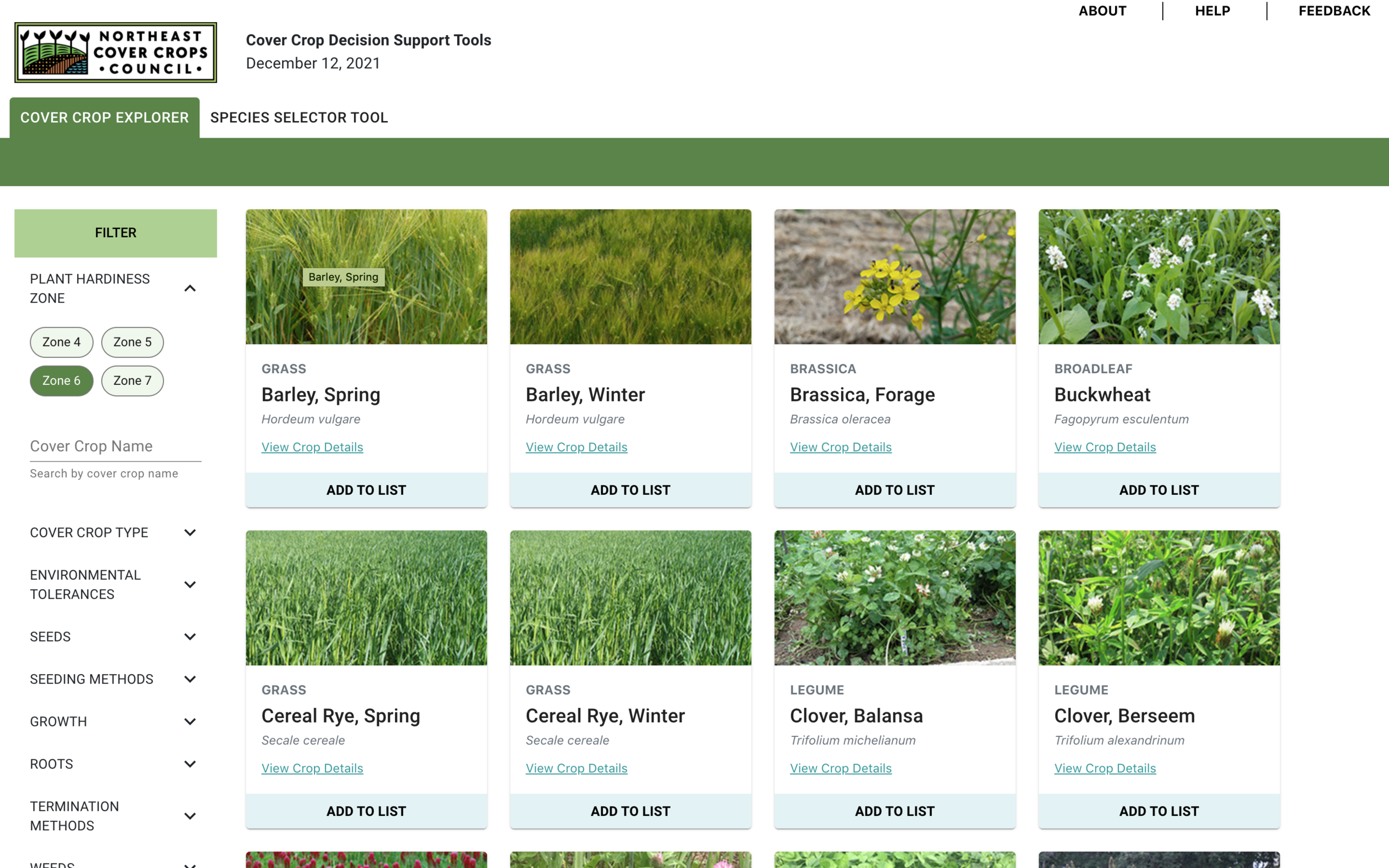Cover Crops: More Important Than Many Believe
Cover crops are crops planted in between the growing seasons of cash crops. They protect the soil from erosion, improve soil organic matter, control weeds, and improve nutrient availability. They also increase the physical yield of cash crops (1). Cover crops are used by 3-7% of farmers in the USA (2). Organic farmers rely more heavily on cover crops than conventional farmers, leading to a difference in relative use of cover crops based on needs.
Organic farmers rely more on cover crops in the management of their farms than do conventional farmers based on practical concerns. There is a fear of poor cover crop establishment and weed competition, and possible negative effects on cash crop yield. Conventional farmers typically spend less on cover crop seed, whereas organic farmers with higher value crops are willing to spend a greater maximum amount on high-performance seed (2). There is also a concern about regional suitability and lack of regionally adapted cover crop varieties for specific needs. Finally, organic farmers have a greater appreciation for the ecosystem services that cover crops provide since they are not able to lean on herbicides and fertilizers to improve their cash crop yields (2), while conventional farmers are able to additionally rely on external chemical inputs for the same effects and benefits.
There is a need for further research and development to better reach the needs of both conventional and organic farmers and encourage cover crop use. A significant reason for barriers to adopt cover crops is the uncertainty of new techniques. In a 2014 survey of organic and conventional farmers (n = 265 organic and n = 75 conventional ), 72% of organic farmers and 74% of conventional farmers agreed or strongly agreed that more research should be conducted on crop breeding and variety improvement (2). Farmer driven cover crop development and breeding experiments help to drive cover crop adoption, but improved education and outreach to farmers on these methods is required for future improvement.
In my project within the AgroEcology lab, I have been helping to improve communication efforts about the benefits and uses of cover crops in an effort to help farmers adopt these practices. Working in various databases I have been categorizing data from the Southeast Cover Crops Council to provide in-depth information about cover crops to be distributed to farmers in the future. More widespread use of cover crops and best management practices will only decrease perceived risks. Shifting focus to these benefits will help to narrow the gap in rates of cover crop use between organic and conventional farmers.
References:
Clark, A. ed., 2008. Managing Cover Crops Profitably. Sustainable Agriculture Research and Education. (https://www.sare.org/wp-content/uploads/Managing-Cover-Crops-Profitably.pdf)
Wayman, S., Kissing Kucek, L., Mirsky, S. B., Ackroyd, V., Cordeau, S., & Ryan, M. R. (2016). Organic and conventional farmers differ in their perspectives on cover crop use and breeding. Renewable Agriculture and Food Systems, 32: 376–385. https://doi.org/10.1017/s1742170516000338

